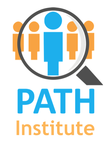Naturalist: Q8 Propensity to avoid health care and price concern
Level: Moderate
Question: q8
Core statement: I only seek help from doctors or therapists when I am really sick because it is too expensive
Response: Neither agree nor disagree
Intrinsic Motivation: I’ll seek health care if I feel its necessary; the cost of the care may figure into my decision to get it.
Recommendations: The theme of sensible use of healthcare services or check-ups should dominate the message. "We thought we better have the doctor check it before it got worse", is a theme consistent with these adults. The cost or expense of seeking physician care does play a role in limiting their use to some extent, and these adults would think this is true for everyone. But the individual sees the expense as necessary and an investment in shortening a potentially lengthy, troublesome illness.
Themes: Visual cues can include physician and patient, or nurse and patient, or the well or sick individual. Traditional medical settings (e.g., doctor's office, hospital) should be balanced with home or work settings. Auditory cues should focus on the individual describing how they pursue a doctor's care when the need arises, but do not put off seeking care until the illness or injury is very severe. Auditory cues can also come from the voice of the doctor discussing the sensible use of healthcare; that is, not seeking it for every little thing, but also not waiting till it gets real serious.
Further considerations: Provide some detailed information, but do not overload the advertisement with it. Avoid small type fonts or placing key points or statements of relevance within long paragraphs. Combine with use of some bulleted short phrases and display of statements of relevance.
Appeal style: Mixture of hedonic (emotional, feeling) and utilitarian (facts, features, and benefits)
Repetitions: Medium repetitions
Durations: Medium duration messages
Complexity: Balance key points with broad based information
Content emphasis: Combine some active visuals with message elements
Primary medium: Mix of television/radio and print
Fear appeals: Use fear appeals sparingly and carefully
Humor: Use moderate humor
Explicit conclusions: Combine drawing explicit conclusions with letting customer draw explicit conclusions
Type of argument: Use combination of one-sided and two-sided arguments
Authority appeals: Peer testimonial or medical authority
Spokesperson: Balance of referent and expert spokesperson
Level: Moderate
Question: q8
Core statement: I only seek help from doctors or therapists when I am really sick because it is too expensive
Response: Neither agree nor disagree
Intrinsic Motivation: I’ll seek health care if I feel its necessary; the cost of the care may figure into my decision to get it.
Recommendations: The theme of sensible use of healthcare services or check-ups should dominate the message. "We thought we better have the doctor check it before it got worse", is a theme consistent with these adults. The cost or expense of seeking physician care does play a role in limiting their use to some extent, and these adults would think this is true for everyone. But the individual sees the expense as necessary and an investment in shortening a potentially lengthy, troublesome illness.
Themes: Visual cues can include physician and patient, or nurse and patient, or the well or sick individual. Traditional medical settings (e.g., doctor's office, hospital) should be balanced with home or work settings. Auditory cues should focus on the individual describing how they pursue a doctor's care when the need arises, but do not put off seeking care until the illness or injury is very severe. Auditory cues can also come from the voice of the doctor discussing the sensible use of healthcare; that is, not seeking it for every little thing, but also not waiting till it gets real serious.
Further considerations: Provide some detailed information, but do not overload the advertisement with it. Avoid small type fonts or placing key points or statements of relevance within long paragraphs. Combine with use of some bulleted short phrases and display of statements of relevance.
Appeal style: Mixture of hedonic (emotional, feeling) and utilitarian (facts, features, and benefits)
Repetitions: Medium repetitions
Durations: Medium duration messages
Complexity: Balance key points with broad based information
Content emphasis: Combine some active visuals with message elements
Primary medium: Mix of television/radio and print
Fear appeals: Use fear appeals sparingly and carefully
Humor: Use moderate humor
Explicit conclusions: Combine drawing explicit conclusions with letting customer draw explicit conclusions
Type of argument: Use combination of one-sided and two-sided arguments
Authority appeals: Peer testimonial or medical authority
Spokesperson: Balance of referent and expert spokesperson
